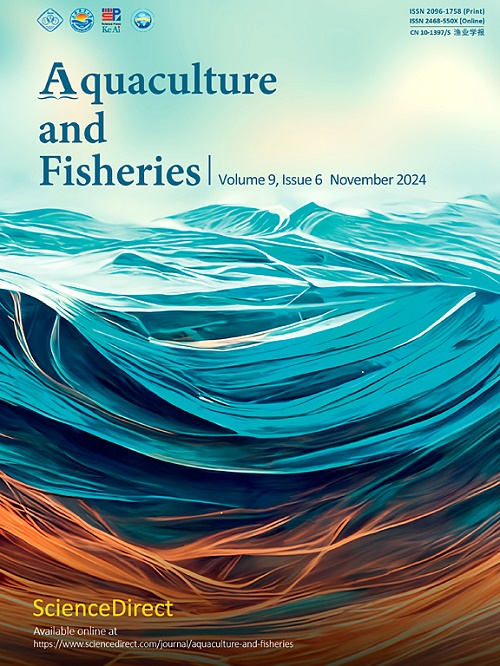Sturgeon and paddlefish: Review of research on broodstock and early life stage management
Q1 Agricultural and Biological Sciences
引用次数: 0
Abstract
Sturgeon aquaculture has taken a parallel yet unique path relative to other teleost rearing. One of the driving factors has been the fact that virtually all extant species are facing extinction; thus, laws concerning the transport and processing of sturgeon are stringent. As a result, most sturgeon companies vertically integrate the farming process from hatchery to harvest, in contrast to the production of other commercial fish species (e.g., trout, sea bass, salmon), where farmers tend to purchase fry from producers specialized only in the production of that life stage and sell product to unaffiliated fish processors. Sturgeon aquaculture is furthermore unique in the extremely high value of the main product (caviar). The secondary product (meat) also surpasses other finfish aquaculture products' average price per weight. These expensive outputs reveal the greatest challenge in production — an exceptionally long time to market from larvae to harvestable adults. For all their rigor and robustness as juveniles and adults, sturgeon species are highly fragile during larval stages. Due to the unique legal framework around sturgeon cultivation, aquaculturists often specialize in regional species, although some hybrids have achieved global popularity. This lends to a heterogenous swath of literature on best cultivation and management practices, especially at early growth stages. Nonetheless, the role of aquaculture as both a food source and restocking program to thwart further extinction of sturgeon species has hardly been fully tapped. In light of the many challenges, this review examines recent advances in sturgeon farming with an emphasis on broodstock and early life-stage management to summarize studies that can help researchers and farmers assess the industry's current state.
鲟鱼和桨鱼:鱼种和早期生命阶段管理研究综述
鲟鱼水产养殖与其他远东鱼类饲养走的是一条平行但又独特的道路。驱动因素之一是几乎所有现存物种都面临灭绝;因此,有关鲟鱼运输和加工的法律非常严格。因此,大多数鲟鱼公司对从孵化到收获的养殖过程进行垂直整合,这与其他商业鱼类(如鳟鱼、海鲈鱼、鲑鱼)的生产形成鲜明对比,在其他商业鱼类的生产过程中,养殖者倾向于从专门从事该生命阶段生产的生产商处购买鱼苗,然后将产品销售给无关联的鱼类加工商。鲟鱼养殖的独特之处还在于其主要产品(鱼子酱)的价值极高。副产品(肉)的平均单重价格也超过了其他有鳍鱼类水产养殖产品。这些昂贵的产品揭示了生产中最大的挑战--从幼鱼到可收获的成鱼,上市时间特别长。尽管鲟鱼幼鱼和成鱼都非常强壮,但它们在幼鱼阶段非常脆弱。由于有关鲟鱼养殖的独特法律框架,水产养殖者通常专门从事区域性品种的养殖,尽管一些杂交品种在全球范围内很受欢迎。因此,有关最佳养殖和管理方法的文献也是五花八门,尤其是在早期生长阶段。尽管如此,水产养殖作为一种食物来源和防止鲟鱼物种进一步灭绝的重新放养计划,其作用尚未得到充分发挥。鉴于存在诸多挑战,本综述探讨了鲟鱼养殖的最新进展,重点是鱼苗和早期生命阶段的管理,并总结了有助于研究人员和养殖者评估该行业现状的研究。
本文章由计算机程序翻译,如有差异,请以英文原文为准。
求助全文
约1分钟内获得全文
求助全文
来源期刊

Aquaculture and Fisheries
Agricultural and Biological Sciences-Aquatic Science
CiteScore
7.50
自引率
0.00%
发文量
54
审稿时长
48 days
期刊介绍:
 求助内容:
求助内容: 应助结果提醒方式:
应助结果提醒方式:


